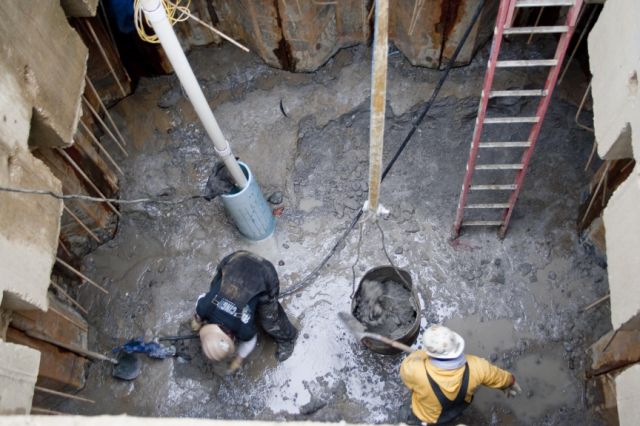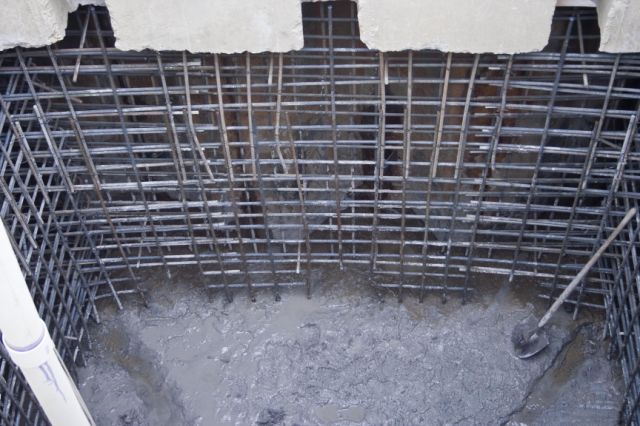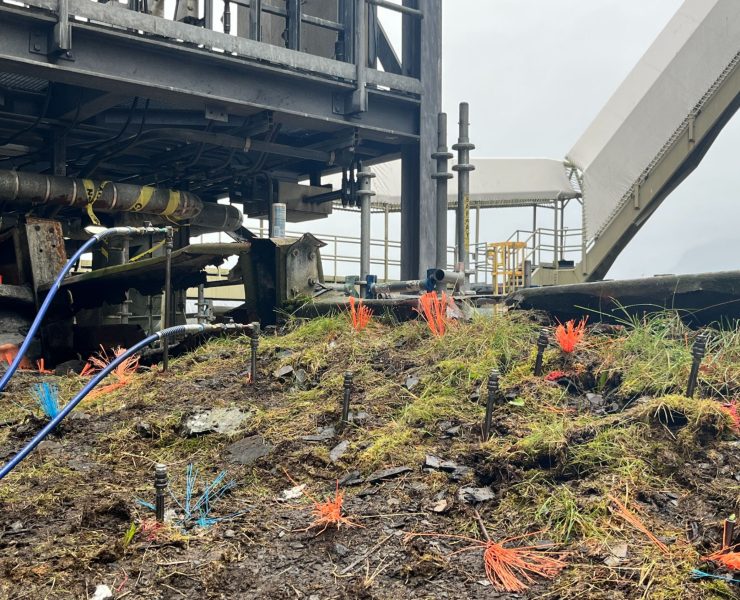SCZ 14 Sheet Piles Used in Unique Lift Station Upgrade in GRSD


HISTORY
In 1977, the Galien River Sanitary District was formed to serve the City of New Buffalo, New Buffalo Township, and Chikaming Township in Michigan, with Lake Charter Township joining a few years later. The wastewater plant has gone through two upgrades, in 1996 and again in 2003, when the city of Bridgman joined and the district was renamed the Galien River Sanitary District (GRSD) Sewer Authority.
The GRSD Sewer Authority operates and maintains the 3.0 MGD wastewater treatment plant, as well as 70 lift stations throughout its district.
PROBLEM
As populations grow, so do the needs of wastewater treatment plants, and the GRSD Sewer Authority was no exception. A new lift station was needed to upgrade the storm water management system. The lift station, also called a pump station, is used for pumping wastewater or sewage from a lower to higher elevation, particularly where the elevation of the source is not sufficient for gravity flow and/or when the use of gravity conveyance will result in excessive excavation and high construction costs. The new lift station was designed to be placed about 25 feet below grade. The original design called for the precast concrete section to be jacked into the ground, but the stiff clays would have required a huge jacking force. The contractor, LD Docsa Associates Inc. of Kalamazoo, MI, decided to look at an option using steel sheet piling.
SOLUTION
Steel sheet piling is often used as temporary excavation support, and the concrete substructure is built inside the cofferdam. In a normal excavation, the inside face of the sheet pile walls would have to be a couple of feet from the outside face of the concrete walls. The space is needed for the bracing system and for formwork. LD Docsa wanted to eliminate the bracing system and use the sheet piles and the concrete walls together in a unique configuration. The steel sheet piles were used as the formwork for the concrete, which in turn was used to brace the sheet piles.
The only way to do this was to construct the concrete walls in a top-down manner. Top-down construction has been used for deep excavation projects were tie-back installation was not feasible and soil movements had to be minimized. There is a significant savings of overall construction time with this method.

After the Nucor Skyline supplied sheet piles were driven, the soil was excavated, and the uppermost portion of the wall was poured. Once the concrete wall had attained enough strength, the excavation could continue. This process was repeated several times, until the final excavation depth was reached and the concrete floor was able to be poured. Nucor Skyline worked with their partner and evaluated the vertical load-carrying capacity and drivability of the sheet piles. During stage six, the sheet piles would have to carry a vertical load of almost 6 kips per foot of wall.
The SCZ 14 is a small cold formed sheet pile, but it still had plenty of strength to take the lateral and vertical loads of the wall. Although the clay was rather stiff and required the use of an impact hammer, the SCZ 14 sheets held up during installation.
Using this unique construction process allowed the contractor to use smaller, shorter sheet piles, while also allowing for a smaller cofferdam and minimized excavation. No additional bracing was needed, thus saving time and money on the project.
PROJECT PARTNERS
Owners
Galien River Sanitary District Sewer
Authority – New Buffalo, MI
Contractors
LD Docsa Associates Inc. – Kalamazoo, MI
PRODUCT
SCZ 14 sheet piles

















